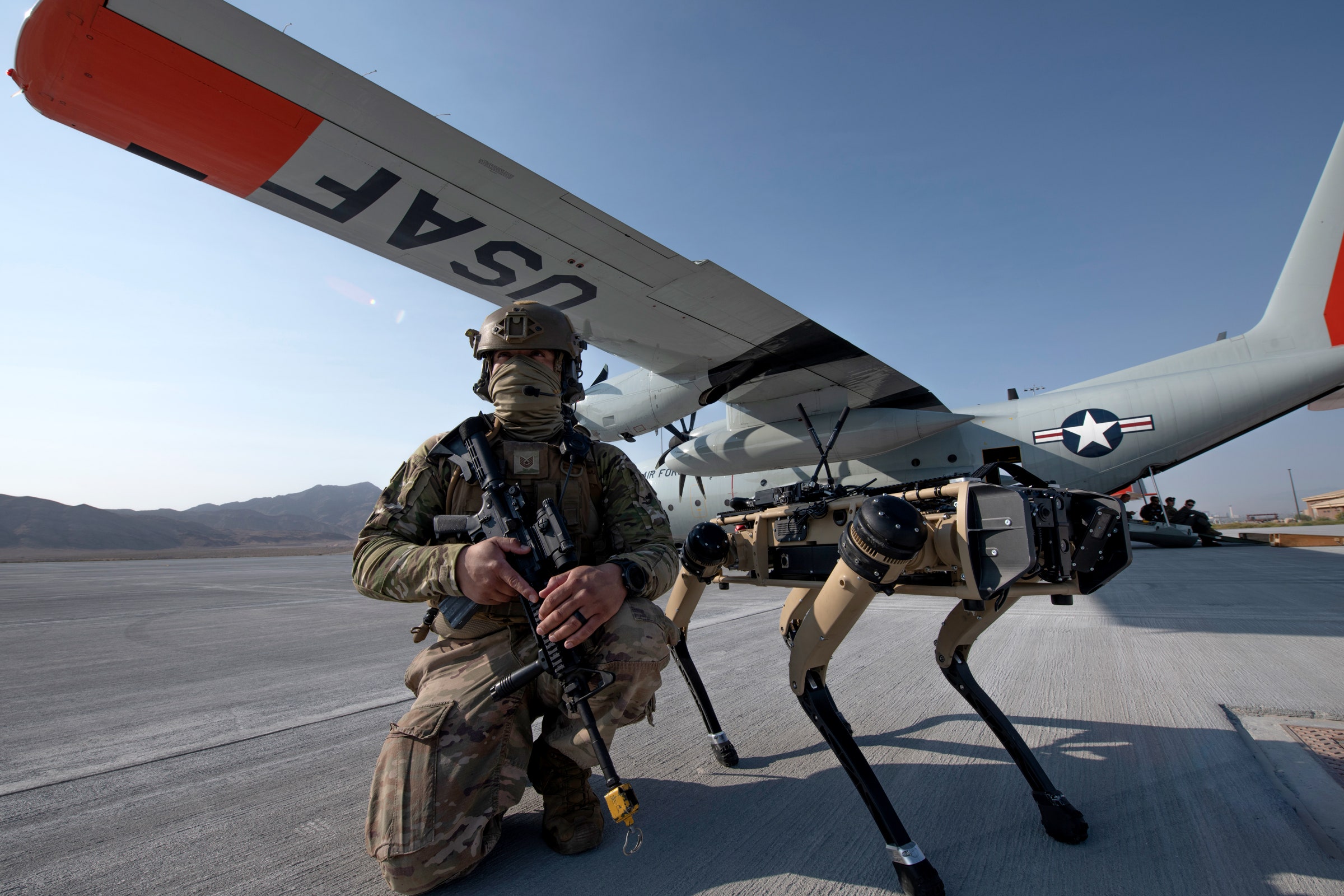“I had a chance to operate [a robot dog] at an AI conference in the Netherlands last year, and it doesn’t have the same dexterity you would expect from a quadruped,” Bendett tells WIRED. “It’s not quite as dexterous, as flexible, or as fast in how it operates. Apart from videos of them doing push-ups and shit like that, it doesn’t run, it can maybe jog, but it can’t even make a turn quite as fast as a tracked or wheeled unmanned ground vehicle.”
“The battlefield is full of man-made and natural countermeasures,” he adds. “That doesn’t mean the US and China won’t try it out, but it’ll just be in a more limited capacity.”
The Chinese military exercise spotlighted on CCTV may appear concerning, but it’s still a controlled exercise in a managed, relatively stable environment, Bendett says. Until robot dogs demonstrate that they can navigate “the debris of the battlefield” under less-than-ideal conditions, they’ll remain something of a mechanical novelty for military planners.
“Yes, they’re neat, they’re cool,” Bendett says. “But show me a video of a pack of these moving on their own through a forest, not just walking by tapping their feet at every step but actually jogging between trees the way I would with a dog. Then we’ll get to the point where these are actual combat dogs.”
It’s unclear what the future of robot dogs might look like in the ranks of the US military, or even the Chinese military. While they’ve certainly proved useful in augmenting base security and conducting hazardous operations like explosive ordnance disposal, their potential combat applications remain understandably ambiguous. But given American and Chinese military planners’ ongoing experiments with armed robot dogs, the future of warfare may involve not just the grind of tank treads and the roar of helicopter rotors, but the metallic patter of four-legged death across distant battlefields.





